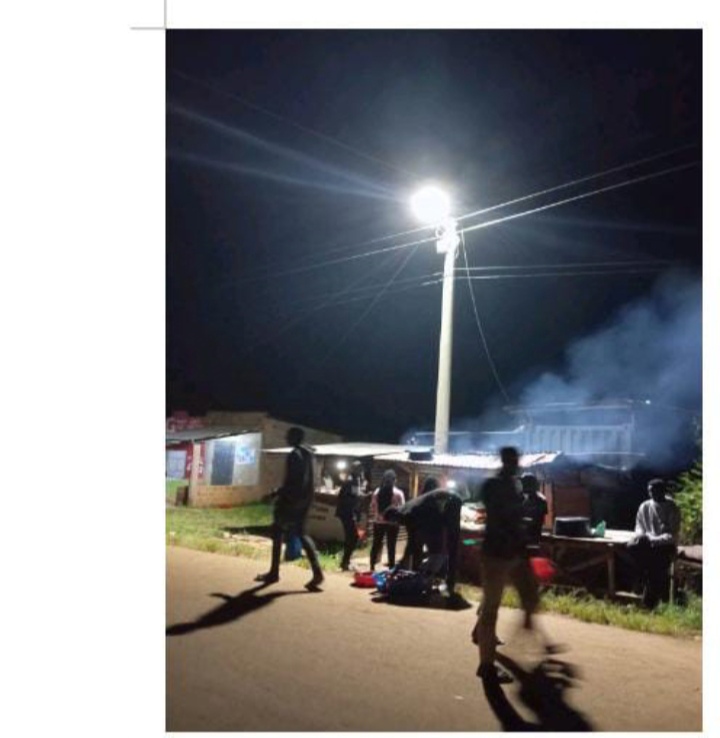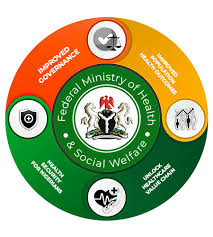
By Lisbeth Micheni, Kenya
The glow of streetlights serves as both a beacon of opportunity and a herald of challenges for traders. It’s a catalyst for economic empowerment. These luminous sentinels not only illuminate the pathways of trade but also cast shadows of adversity that traders must navigate in their quest for prosperity.
Street lighting helps shoppers navigate through the market more easily, reducing the likelihood of accidents or confusion. Clear visibility of pathways and stall displays makes it convenient for shoppers to find what they are looking for and explore different sections of the market.
For traders, the presence of street lighting is more than just a matter of convenience—it’s a lifeline. As the sun dips below the horizon and the shadows lengthen, the warm glow of streetlights bathes the market stalls in a soft, inviting light, beckoning customers to explore the offerings laid out before them.
The warm glow of streetlights creates a welcoming and inviting atmosphere in stall markets, encouraging shoppers to explore and linger. This ambiance can lead to increased engagement and repeat visits, as shoppers enjoy the experience of browsing under the gentle illumination of the evening lights. Without the guidance of streetlights, the market would be plunged into darkness, its treasures obscured and its traders left to languish in obscurity.
The warm glow of streetlights illuminates the market stalls, transforming the once dimly lit alleyways into vibrant hubs of activity. Well-lit streets of the kitere market make it easier for stall owners to showcase their products, attracting the attention of potential customers even after dark. This increased visibility can lead to higher foot traffic and sales thus boosting the economic activity in the area.
The visibility provided by streetlights not only attracts customers but also instils a sense of safety and security, fostering a conducive environment for commerce to thrive. Adequate street lighting enhances safety and security in the trading area, making customers feel more comfortable and willing to visit shops and stalls at night. Traders can operate with greater peace of mind, knowing that their businesses are less susceptible to theft and vandalism.
The traders within the Kitere market say that they can extend their business hours well into the evening and that the onset of dusk doesn’t signal the end of their workday, instead, it marks the beginning of a new opportunity to tap into a larger pool of potential customers who are out and about after dark.
This extended trading time translates into increased revenue and improved livelihoods for individuals and families within the market.” These lights not only provide us with sufficient light to see our products well at night, but they also ensure our safety and that of our customers. Through these lights, we can conduct our business for longer hours even after the sun sets. This increases our income and helps us achieve our business goals” says Mary Omollo, a vegetable vendor in kitere market.
Rose Mauti, a vegetable vendor in Kitere market, attests to the transformative power of street lighting.” Before the installation of streetlights, I used to pack up my stall as soon as darkness fell,” she shares. “But now, with the streets brightly lit,I can continue selling well into the night, providing for my family and saving for my children’s education.”
Street lighting fosters a sense of community and fellowship among traders and residents alike. Well-lit streets become gathering places where people come together to socialise, exchange ideas, and support local businesses. Well-lit streets become natural gathering places where residents and traders come together to socialise, interact, and connect. The inviting atmosphere created by street lighting encourages people to linger, fostering a sense of belonging and community cohesion.
However, the journey towards brighter, safer streets is fraught with obstacles. One limitation regarding the weather changes in street markets is the impact they can have on the effectiveness of street lighting. Inclement weather conditions such as heavy rain, fog, or snow can reduce visibility and diminish the effectiveness of streetlights in illuminating the market area. Poor visibility may deter shoppers from visiting the market, leading to decreased foot traffic and potential loss of revenue for stall owners.
Additionally, extreme weather events like storms or strong winds can damage lighting fixtures or infrastructure, resulting in temporary disruptions or longer-term maintenance issues that affect the reliability of street lighting in the market. These weather changes lead to the market owners closing their business early leading to low sales. In some parts of the market, street lighting has not provided sufficient coverage or illumination. Inadequate coverage of street lighting in some parts of the market has deterred customers from exploring certain areas of the market, particularly if they feel unsafe or uncomfortable due to poor visibility.
Customers may avoid dimly lit sections altogether, resulting in decreased foot traffic and fewer opportunities for traders to attract potential buyers to their stalls. This can ultimately impact sales and revenue for stall owners, particularly those located in poorly lit areas. Inadequate street lighting coverage in some parts has restricted the operating hours of stall markets, particularly during the evening or nighttime hours when visibility is crucial for business activities. Traders are forced to close their stalls earlier than desired due to safety concerns or lack of customer traffic, resulting in missed opportunities for sales and revenue generation.
Areas of the market that are poorly lit due to inadequate coverage pose safety risks for both traders and customers. Dimly lit sections create shadows and obscure potential hazards, increasing the likelihood of accidents or incidents such as trips, slips, or falls. Traders may also feel vulnerable to theft or vandalism in poorly lit areas, affecting their sense of security and well-being. Areas of the market that are inadequately lit may be perceived negatively by both residents and visitors, impacting the overall reputation and attractiveness of the market. Dimly lit sections may be associated with feelings of insecurity, neglect, or lack of care, deterring people from visiting or recommending the market to others. This can harm the market’s reputation and long-term viability as a vibrant community hub.
categories
recent posts





